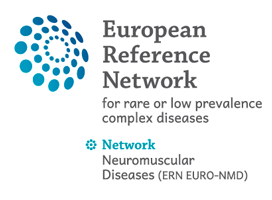01 Apr 2018
Diagnosis and management of Duchenne muscular dystrophy, part 2: respiratory, cardiac, bone health, and orthopaedic management.
Authors:
Prof David J Birnkrant, MDa ∙ Prof Katharine Bushby, MDb ∙ Carla M Bann, PhDc ∙ Prof Benjamin A Alman, MDd ∙ Prof Susan D Apkon, MDe ∙ Angela Blackwell, MPHc ∙ Laura E Case, DPTg ∙ Prof Linda Cripe, MDh ∙ Stasia Hadjiyannakis, MDi ∙ Aaron K Olson, MDf ∙ Daniel W Sheehan, MDj ∙ Julie Bolen, PhDk ∙ David R Weber, MDl ∙ Leanne M Ward, MDi for the DMD Care Considerations Working Group†
a Department of Pediatrics, MetroHealth Medical Center, Case Western Reserve University, Cleveland, OH, USA
bJohn Walton Muscular Dystrophy Research Centre, Institute of Genetic Medicine, Newcastle University, Newcastle upon Tyne, UK
c RTI International, Research Triangle Park, NC, USA
d Department of Orthopaedic Surgery, Duke University School of Medicine and Health System, Durham, NC, USA
e Department of Rehabilitation Medicine, Seattle Children’s Hospital, Seattle, WA, USA
f Department of Pediatrics, Seattle Children’s Hospital, Seattle, WA, USA
g Doctor of Physical Therapy Division, Department of Orthopaedics, Duke University School of Medicine, Durham, NC, USA
h Department of Pediatrics, Nationwide Children’s Hospital, The Ohio State University, Columbus, OH, USA
i Division of Endocrinology and Metabolism, Children’s Hospital of Eastern Ontario, and University of Ottawa, Ottawa, ON, Canada
j John R Oishei Children’s Hospital, University at Buffalo, The State University of New York, Buffalo, NY, USA
k Rare Disorders and Health Outcomes Team, National Center on Birth Defects and Developmental Disabilities, Centers for Disease Control and Prevention, Atlanta, GA, USA
l Division of Endocrinology and Diabetes, Golisano Children’s Hospital, University of Rochester Medical Center, Rochester, NY, USA
†Members listed at the end of part 1 of this Review
A coordinated, multidisciplinary approach to care is essential for optimum management of the primary manifestations and secondary complications of Duchenne muscular dystrophy (DMD). Contemporary care has been shaped by the availability of more sensitive diagnostic techniques and the earlier use of therapeutic interventions, which have the potential to improve patients’ duration and quality of life. In part 2 of this update of the DMD care considerations, we present the latest recommendations for respiratory, cardiac, bone health and osteoporosis, and orthopaedic and surgical management for boys and men with DMD. Additionally, we provide guidance on cardiac management for female carriers of a disease-causing mutation. The new care considerations acknowledge the effects of long-term glucocorticoid use on the natural history of DMD, and the need for care guidance across the lifespan as patients live longer. The management of DMD looks set to change substantially as new genetic and molecular therapies become available.

